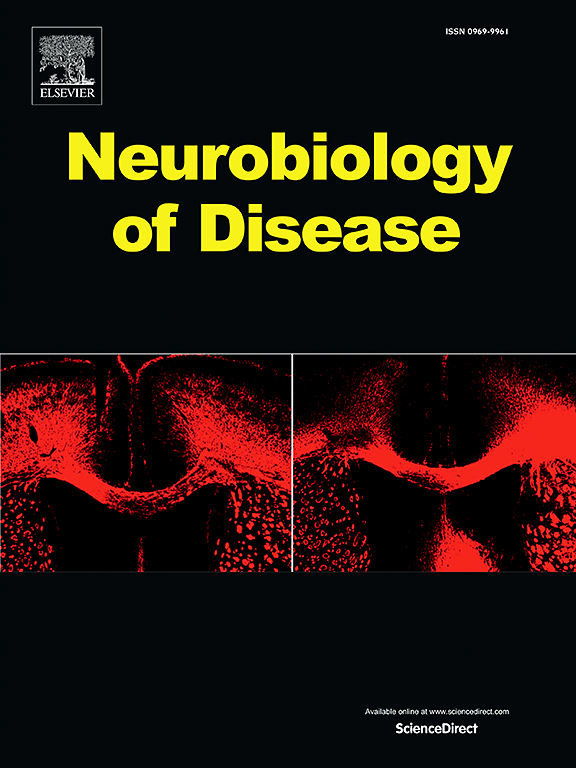Global Grin2a loss causes divergent impairments to PV+ and SST+ interneurons and alters gamma oscillations in prefrontal cortex
IF 5.6
2区 医学
Q1 NEUROSCIENCES
引用次数: 0
Abstract
Background
Loss-of-function mutations in the Grin2a gene, encoding the GluN2A subunit of NMDA receptors, confer elevated schizophrenia (SCZ) risk. Although GluN2A is expressed in multiple interneuron subtypes, its role in inhibitory circuit function remains incompletely understood. Recent genetic and transcriptomic studies implicate somatostatin-positive (SST+) interneurons in SCZ pathophysiology, raising the question of whether Grin2a deletion differentially affects SST+ and parvalbumin-positive (PV+) cells.
Methods
We utilized global Grin2a knockout (KO) and heterozygous (HET) mice to investigate how GluN2A deficiency affects inhibitory dynamics in the prelimbic (PrL) medial prefrontal cortex (mPFC). Immunohistochemistry quantified interneuron density, while slice electrophysiology and optogenetics assessed inhibitory postsynaptic current (IPSC) amplitude and kinetics, quantal GABA release, and PV+- and SST-driven gamma-band oscillations (GBOs).
Results
Grin2a KO and HET mice exhibited increased PV+ and SST+ interneuron density and a shift in excitatory–inhibitory (E/I) balance favoring inhibition. PV+ interneurons displayed functional impairments characterized by prolonged IPSC decay, elevated asynchronous GABA release, and enhanced PV-driven gamma-band oscillations (GBOs), consistent with impaired presynaptic calcium handling. In contrast, SST+ interneurons exhibited increased IPSC amplitudes without alterations in short-term plasticity or oscillatory drive, suggesting modulation of inhibitory tone without affecting network synchrony.
Conclusion
GluN2A loss appears to disrupt inhibitory networks through distinct cell-type-specific mechanisms—presynaptic dysfunction in PV+ cells and postsynaptic enhancement from SST+ cells. PV+ dysfunction aligns with gamma synchrony impairments linked to SCZ cognitive flexibility, while SST+ alterations may contribute to impaired feedback inhibition and sensory deficits. These findings clarify GluN2A's role in interneuron subtype function and network stability in SCZ.
全球Grin2a缺失导致PV+和SST+中间神经元的发散性损伤,并改变前额皮质的伽马振荡。
背景:编码NMDA受体GluN2A亚基的Grin2a基因的功能缺失突变会增加精神分裂症(SCZ)的风险。虽然GluN2A在多个中间神经元亚型中表达,但其在抑制回路功能中的作用尚不完全清楚。最近的遗传学和转录组学研究表明,生长抑素阳性(SST+)中间神经元与SCZ病理生理有关,这就提出了Grin2a缺失对SST+和PV+细胞的影响是否存在差异的问题。方法:我们利用全球GluN2A敲除(KO)和杂合(HET)小鼠来研究GluN2A缺乏如何影响前边缘(PrL)内侧前额叶皮层(mPFC)的抑制动力学。免疫组织化学量化中间神经元密度,切片电生理和光遗传学评估IPSC振幅和动力学、GABA量子释放以及PV+和sst驱动的伽马波段振荡(GBOs)。结果:Grin2a KO和HET小鼠表现出PV+和SST+中间神经元密度增加,兴奋-抑制(E/I)平衡偏向抑制。PV+中间神经元表现出功能损伤,其特征是IPSC衰变延长,异步GABA释放升高,PV驱动的伽马带振荡(GBOs)增强,与突触前钙处理受损一致。相比之下,SST+中间神经元IPSC振幅增加,但短期可塑性和振荡驱动没有改变,这表明抑制音调的调节没有影响网络同步性。结论:GluN2A缺失似乎通过不同的细胞类型特异性机制破坏了抑制网络——PV+细胞的突触前功能障碍和SST+细胞的突触后增强。PV+功能障碍与与SCZ认知灵活性相关的伽马同步损伤一致,而SST+改变可能导致反馈抑制受损和感觉缺陷。这些发现阐明了GluN2A在SCZ中间神经元亚型功能和网络稳定性中的作用。
本文章由计算机程序翻译,如有差异,请以英文原文为准。
求助全文
约1分钟内获得全文
求助全文
来源期刊

Neurobiology of Disease
医学-神经科学
CiteScore
11.20
自引率
3.30%
发文量
270
审稿时长
76 days
期刊介绍:
Neurobiology of Disease is a major international journal at the interface between basic and clinical neuroscience. The journal provides a forum for the publication of top quality research papers on: molecular and cellular definitions of disease mechanisms, the neural systems and underpinning behavioral disorders, the genetics of inherited neurological and psychiatric diseases, nervous system aging, and findings relevant to the development of new therapies.
 求助内容:
求助内容: 应助结果提醒方式:
应助结果提醒方式:


